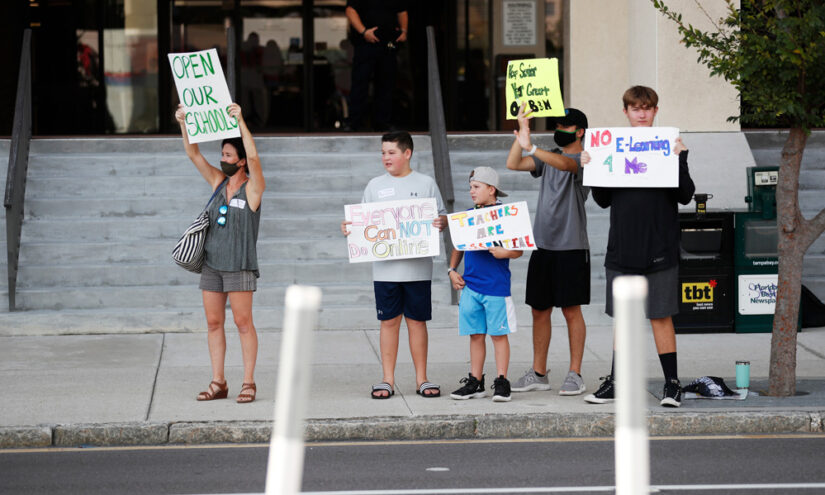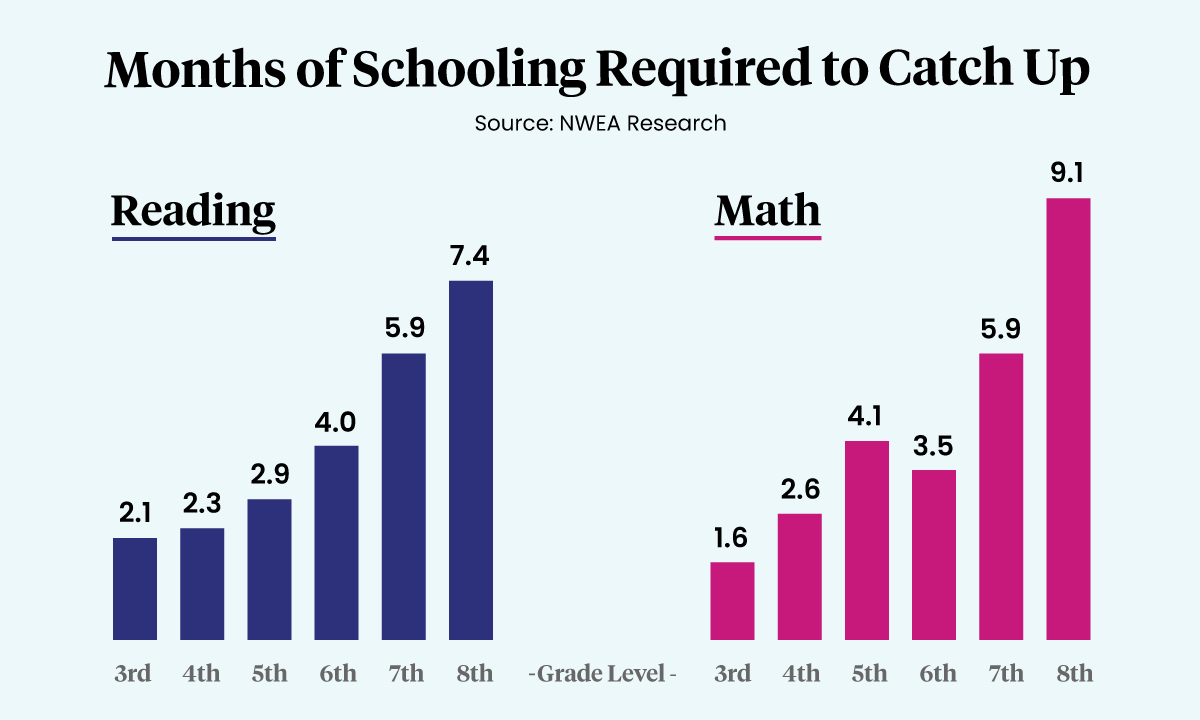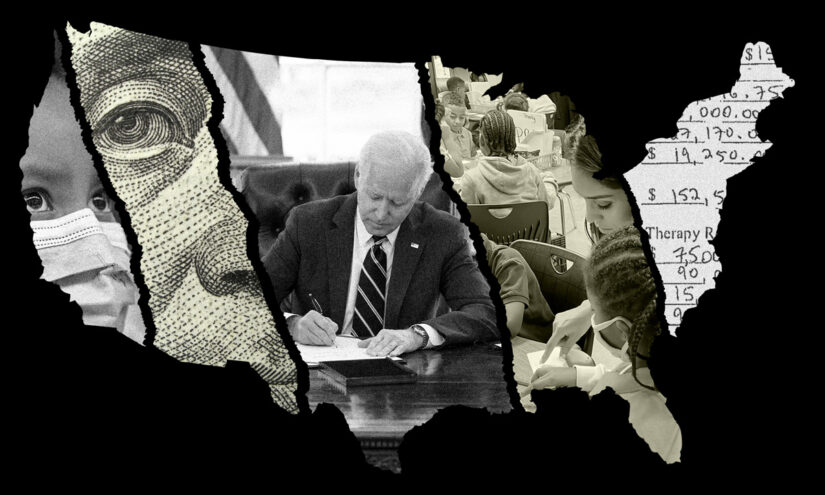Polarization, Learning Loss, Relief Funds: 7 Insights into Pandemic Recovery and Aftermath in U.S. Schools
A weekly roundup of headlines about how the pandemic — and its aftermath — is shaping schools and education policy.

Get stories like this delivered straight to your inbox. Sign up for The 74 Newsletter
This is our biweekly briefing on the pandemic’s long-term impact on America’s educational system. See the full archive.
This Week’s Top Story

The Myth of Early Pandemic Polarization
- Via The New York Times: “The story is this. When COVID arrived on American shores, the United States did not have to collapse into COVID partisanship, with citizen turning against citizen and each party vilifying the other as the source of our national misery. Instead, political leaders could have moved forward more or less in unison, navigating epidemiological uncertainties unencumbered by the weight of the culture war.”
- “This is one of the revelations of ‘Lessons from the COVID War, an Investigative Report,’ by 34 experts, published in April by PublicAffairs.”
- “Probably the most explosive and long-lasting fight was over school closings, but those fights didn’t take off in earnest until September 2020 at the earliest. According to a database maintained by Education Week, all but nine states ordered their schools closed for the remainder of the academic year in spring 2020. Of the nine that didn’t, three with Democratic governors, including California, and four with Republican governors, including Florida, recommended it. Two controlled by Republicans left the question up to local school districts.”

‘Education’s Long COVID’: Recovery Stalled for Most Students, Data Show
- Via The 74: “Pandemic recovery has essentially stalled for most of the nation’s students, new data shows, and upper elementary and middle school students actually lost ground this year in reading and math.”
- “On average, students need four more months in school to catch up to pre-pandemic levels, according to the results from NWEA, a K-12 assessment provider. This fall’s ninth graders need far more — roughly a full extra school year.”
- Read the full report from NWEA.
U.S. Vaccine Program Now Flush With Cash, Short on Key Details
- Via The New York Times: “Efforts to develop the next generation of COVID vaccines are running up against bureaucratic hassles and regulatory uncertainty, scientists say, obstacles that could make it harder to curb the spread of the coronavirus and arm the United States against future pandemics.”
- “Project NextGen, conceived with COVID deaths at their lowest level, has neither Warp Speed’s vast money nor the mandate to purchase shots in bulk.”
The Teaching Profession is Facing a Post-Pandemic Crisis
- Via Chalkbeat: “Dire warnings of teacher shortages are nothing new, especially during the pandemic, and are sometimes overblown. But a confluence of warning signs suggest that the country is at a post-pandemic inflection point.”
- “More teachers left the classroom last year, new data confirms”
- “Teacher morale has dropped sharply since the pandemic”
- “Fewer people want to become teachers”
- “Some schools and subjects have longed faced major shortages — and continue to”
- “More teachers left the classroom last year, new data confirms”

$190 Billion Later, Reason to Worry Relief Funds Won’t Curb COVID’s Academic Crisis
- Via The 74: A “10-month examination by The 74 shows that many districts haven’t used the funds with the urgency intended. Some have barely tapped monies advocates say are critical for academic recovery, while others have pumped millions of dollars into major classroom additions, upgrading athletic fields and other expenditures unrelated to the pandemic.”
- “With just over a year left to allocate the funds, the question isn’t only if districts will hit the September 2024 deadline, but whether the unprecedented windfall will leave students better off.”
- The catch: “Districts have not made it easy to answer those questions.”
Child Care Cliff: 3.2 Million Children Likely to Lose Spots as Federal Funds End
- Via the Century Foundation: “Beginning Sept. 30, 2023, states will face a steep dropoff in federal child care investment. Without congressional action, this cliff will have dire consequences. More than 3 million children are projected to lose access to child care nationwide. Seventy-thousand child care programs are likely to close.”
- “In addition, we project that millions of parents will be impacted, with many leaving the workforce or reducing their hours, costing families $9 billion each year in lost earnings.”
The State of COVID Infections Now
- Via Katelyn Jetelina: Recently, “The New York Times suggested the pandemic is over. We are in a very different place. And, I understand the desire for a ‘thank goodness that’s done’ mindset. And I hope COVID-19 isn’t always on top of your mind.”
- But: “COVID-19 is increasing; don’t be surprised to hear more people getting infected around you. I already am. This isn’t enough reason to change my personal behaviors, but that time may come this fall.”
… And on a Lighter Note
Get stories like these delivered straight to your inbox. Sign up for The 74 Newsletter

;)

